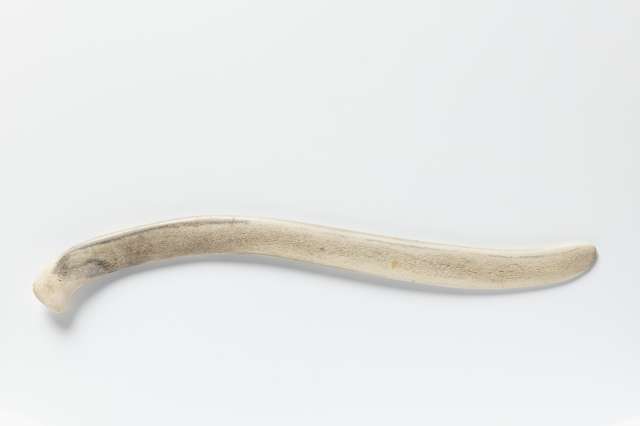Snow knife (savik)
In the past, this knife (savik), also named pana in other regions of the Canadian Arctic, was used to remove snow that clung to the fur of damp or wet clothes and to cut out blocks of snow. Inuit melted the blocks to provide water or used them to build igloos. A person using a snow knife might lick it to create a thin layer of ice on the blade, in order to slide the knife effortlessly through the snow. Made of caribou antler, it was kept in water or stored in a cool place, since it tended to warp if allowed to dry out or left for too long in the sun. It was traditionally used by men, but women could also use it to shave bumps on walls and fill in holes between snow blocks during igloo building.
Nowadays, Iglulingmiut seldom build snowhouses. When they do, while travelling across the land, they use saws or metal knives.


